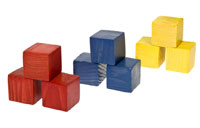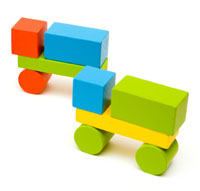
The distribution center plays a huge role in the success of any supply chain, so the design of your DC must support your company’s go-to-market strategy. When planning a new or reconfigured DC, there are critical factors to consider that will affect more than just what occurs inside the space.
How can you better align DC performance with your company’s productivity and profitability goals? Here are eight areas to examine.

- Just the facts, ma’am
Understanding the precise metrics of day-to-day operations will allow you to make the most of space and productivity, and also help you manage costs. Gather every fact you can before you start the plan. There are more details to follow, but here are some examples:
-
The number of unique SKUs
-
SKUs: rack storage vs. floor stacks of bulk goods?
-
How are items picked (percentage full pallet, percentage case, percentage each)?
-
Will two-way travel be required in the aisles?
-
- Room to breathe
To fully maximize storage space, understand how the “honeycomb” layout model, which refers to the amount of empty or unoccupied storage space in a facility, affects your available space. Here are some suggestions:
- For SKUs with multiple locations, pick one all the way to empty rather than having multiple partially full locations.
- Assume that only 85% of each location’s goods is likely be consumed at all times.
- Keep 15% of bulk locations available for inbound put away.
- If too much capacity is occupied, it won’t be possible to optimize the put-away and maintain proper zoning. In other words, don’t plan for 100% space utilization.
- Waste not, want not
In a case-pick environment, vertical space is often where you’ll find the most waste. Simply by changing the vertical rack configuration and removing unused space above and below SKUs, you can gain an extra 30% of usable space. Other considerations to minimize empty space include:
- Accurate SKU dimensions. How high can the items stack? How deep will they go?
- SKU velocity. Which are high-volume runners? Which will be stored in small amounts with very fast turns? Which will need just one pallet?
- Lot codes (specific identifiers for a group of cases/pallets for the same SKU) and strict “first in, first out” (FIFO) rules. It may be best to include shallower floor locations and use end caps (locations at the ends or intersections of rows) or forward-pick locations to store these items.
TIP: Reduce unused space and energize your team! Develop a metric for units stored per sq. ft. of space. Then, if the current ratio is 2.1 cases per square foot, challenge your associates to increase the ratio to 2.3 within the next six months. Have someone assigned to watch this KPI to investigate root causes if the ratio slips lower.
- People make the difference
Put the right people in the right places. Remember that space utilization does not end with planning: It’s people who, once properly trained, carry out your documented procedures.
Your employees know well that good space planning operationally starts at the dock as products are received. As you create your personnel plan, ask:
- Is your warehouse management system (WMS) programmed to properly direct tasks to sustain your plan?
- Who makes the decision about where a product will be stored? (If you leave that decision to the lift driver, he might make the best time-saving decision rather than the best space-saving decision.)
- Who is your space planner?
- Is the planner aware of what inbound loads are expected? (Consider having the planner develop specific storage instructions for each load.)
- Identify the right equipment
You may be able to reduce aisle space if you study the profile of planned shipments. Check out equipment designed for narrow aisle picking before you make the investment. For instance, analyze equipment with side guard rails vs. wire-guided equipment to determine relative benefits.
- Traffic report
Employee travel time is a critical factor in the hours that are needed to run a DC. High-volume parcel shipping requires the maximum facings of the greatest volume SKUs, so you should set up a pick line that minimizes the footprint. This improves productivity and, as a side effect, it minimizes space.
Avoid congestion: To plan for minimum travel time without creating gridlock, try spacing out “A” items into different areas. Then the pick line can pick, box and pass the order onto the next person without creating congestion at any one point.
TIP: Reduce walking by shortening conveyors and placing supplies and tools such as scales close at hand. The process should be set up for a one-piece flow. Rather than batching 20 boxes through each step of a process, try filling them one at a time.
- Know what’s hot and what’s not
Design a program for tracking obsolete and slow-moving products so you can remove them from the space. And understand your peak demands.
- Add value, not cost
Value-added services, which include nontraditional warehousing activities — such as repackaging goods for a specific store — can often involve wasted space.
You want to adopt the leanest possible product flow to maximize your staging areas because it’s less costly to keep something in a storage location than at a value-added staging location.
Keep in mind that there is no cookie-cutter solution to building a successful distribution operation. Each business requires a different facility layout and material flow.
And don’t make any assumptions. The following five questions might seem too basic, but — much to the regret of the DC user — we’ve seen these considerations forgotten or ignored:
- What are your peak demands?
- How big or tall are your pallets?
- How many cases fit a pallet? Is overhang an issue?
- How deep is your location and how wide?
- How wide must the aisles be for the equipment selected?
If you know your business and pay attention to these key areas, you can make your DC much more space efficient. And if you’re contemplating a new distribution facility, you can make sure it’s best-of-breed.
Nathan Beene is director, logistics engineering, for Kenco Management Services (www.kencogroup.com), a third-party logistics provider.
FOOD FOR THOUGHT

IF YOUR DISTRIBUTION CENTER WILL BE HANDLING FOOD, consider the entire process when you allocate space. Some facilities have all-case picking with lift drivers on two-pallet walker-rider lifts. They pick the bottom two levels, while stand-up reach lifts replenish from the above reserve locations to the pick locations.
To keep replenishment drivers and pickers out of each other’s way, picking aisles and put away/replenishment aisles are separated by using a pallet flow rack on the bottom two levels, and a push-back rack pallet storage rack system on the above reserve levels. In a dry environment, this requires more space.
In a temperature-controlled environment in which freezing or refrigeration is required, reduced space will reduce the cost of cooling. In this case, don’t use dedicated pick aisles and put away/replenishment aisles. Rather, design all static-rack (one-deep) or all push-back racks where everyone shares the same aisles. This reduces the footprint, but the trade-off is increased labor requirements. — NB